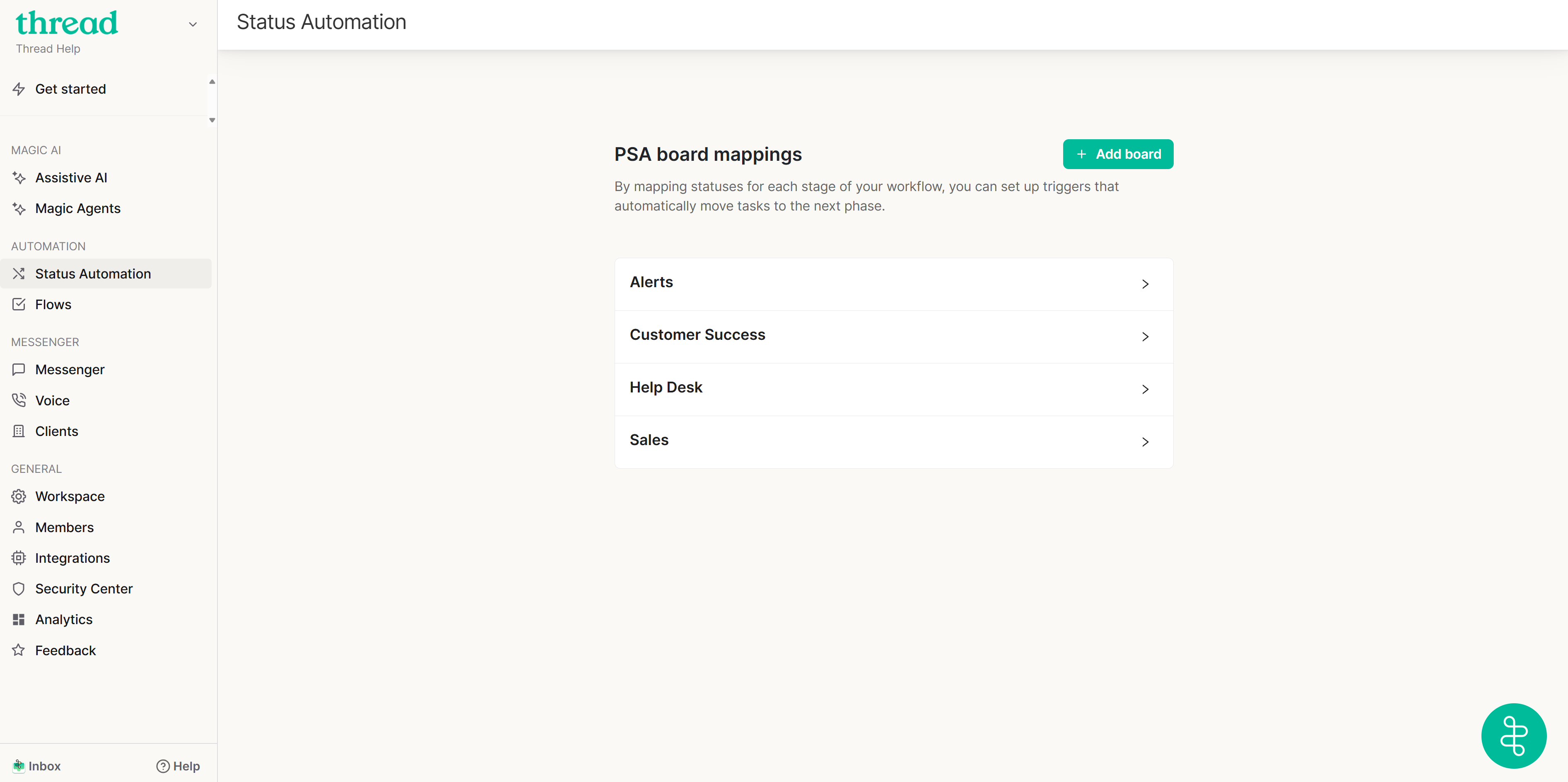Configure Status Mapping in Thread
The first and most important step in setting up status mapping is configuring a Status Group for "Done". This group is not retroactive, so it’s important to include all statuses that indicate closure or resolution—such as "Closed", "Resolved", or "Completed"—when you first create your Thread workspace. Once the "Done" group is established, you can optionally configure status change mappings to automate status transitions based on specific triggers or user actions.
1. Define Status Groups (Recommended First Step)
Status Mappings can be configured by going to Thread Admin Panel -> Click on Status Automation On The Right Side

Done (Recommended)
The "Done" group should include all statuses that represent a ticket being completed or resolved, such as:
ClosedCompleted (QA)Resolved
This group is critical for accurate tracking of resolution workflows and for enabling automated transitions such as closing threads after confirmation.
Waiting (Optional)
The "Waiting" group includes statuses that indicate active work on a ticket. Common examples are:
In ProgressWaiting on Customer
While optional, this group is particularly useful when paired with the status change mapping that triggers when a contact replies to a thread in a "Waiting" status. This mapping helps keep active tickets from slipping into inactivity by ensuring timely reassignment or review.
2. (Optional) Configure Status Change Mappings
With Status Groups configured, you can optionally set up automatic transitions triggered by specific thread activity. These mappings reduce manual status updates and ensure consistency across workflows.
Available triggers include:
When a Contact Replies After the First Agent Reply
Automatically moves the thread to a mapped status to resume visibility and SLA response tracking, such as:
Waiting for TechnicianUpdated
When a Contact Replies to a Closed Thread
Reopens the thread and sets it to a visible status, ensuring it re-enters active workflows, such as:
ReopenedNewWhen a TimePad Entry Has a Resolution Flag
Moves the thread to a resolved status when TimePad marks the issue as resolved, such as:
ResolvedCompletedClosed
When a Contact Replies to Threads in the "Waiting" Group
Ensures the thread stays in a visible, active state when customer engagement resumes, such as:
In ProgressWith CustomerWaiting on Customer
When an Approval is Made
Transitions the thread to a designated status when a request is approved, such as:
ApprovedAccepted
When an Approval is Finished (Declined, Canceled, etc.)
Updates the status to reflect the end of the approval process, aiding in visibility and closure, such as:
DeclinedCancelled
3. (Optional) Magic Agent Automation Mapping
If your team uses Magic Agents, you can also automate status updates based on agent activity:
When Magic Agent begins working on a thread
Sets the thread to a triage or intake status, such as:
TriageInitial Review
When Magic Agent completes automation work and exits a thread
Moves the thread to a ready-for-review or next-step status, such as:
Ready for DispatchAwaiting Assignment
When a contact confirms resolution while the Magic Agent is engaged
Automatically marks the thread as closed, such as:
ClosedConfirmed ResolvedCompleted
4. Saving Changes
Be sure to click Save at the bottom of the board configuration page after making any updates. Changes are not applied until saved.
5. Best Practices
- Configure Status Groups before enabling any other automations.
- Review configuration per board or queue to reflect the specific structure of your ticketing system.
- Ensure that Magic Agent logic is clearly tied to appropriate status transitions to avoid workflow ambiguity.
For questions or implementation support, please contact your Thread Customer Success Manager or Thread Support.
